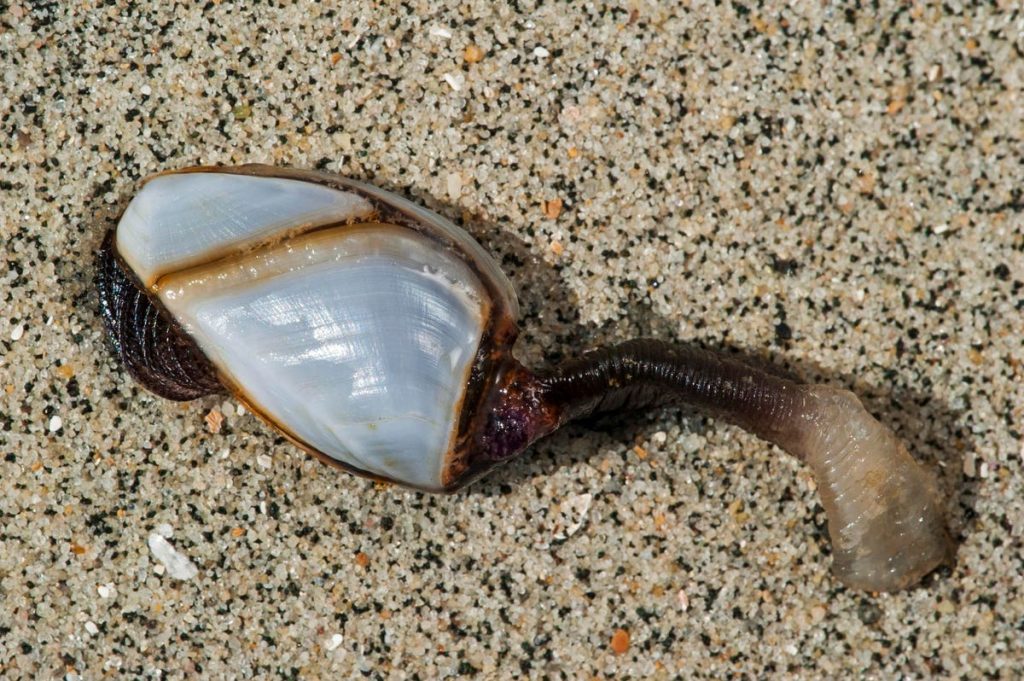A team of University of South Florida geoscientists has create a method that can reconstruct the drift path and origin of debris using the shells of barnacles. This new approach could also help to locate the wreckage of Malaysia Airlines MH370, a Boing 777 with 12 crew members and 227 passengers onboard that vanished under strange circumstances during a regular flight from Kuala Lumpur to Beijing.
“The plane disappeared more than nine years ago, and we all worked aiming to introduce a new approach to help resume the search, suspended in January 2017, which might help bring some closure to the tens of families of those on the missing plane,” explains Nassar Al-Qattan, a recent USF geochemistry doctoral graduate and lead author of the new study.
Based on radar signals and satellite pings, the plane deviated from its flight path shortly after reaching cruising altitude, flying westwards for over eight hours and finally disappearing somewhere over the Indian Ocean. Debris washed ashore Reunion Island off the coast of Africa more than a year later supports this reconstruction of events.
Coauthor and associate Professor Gregory Herbert was inspired the moment he saw photographs of the recovered plane’s flaperon—part of the wing and the first debris confirmed to come from the missing airplane—covered in barnacles.
“I immediately began sending emails to the search investigators because I knew the geochemistry of their shells could provide clues to the crash location.”
As an evolutionary and conservation biologist, Herbert studies marine systems with a particular focus on shelled marine invertebrates, such as oysters, conchs and barnacles. Over the last two decades, Herbert created and refined a method to extract ocean temperatures stored in the chemistry of invertebrate shells.
First the research team did a growth experiment with live barnacles in a controlled environment. Barnacles and other shelled marine invertebrates grow their shells daily, producing internal layers similar to tree rings. The researchers recorded how changes in water temperature will change the chemistry of the single layers, focusing on oxygen isotopes.
Oxygen exists in three stable isotopes: oxygen 16, 17, and 18. Oxygen isotopes behave chemically in an identical manner, but due to the slight mass difference, water molecules containing heavy oxygen isotopes tend to evaporate and precipitate at different rates. Cold ocean water will show a higher level of heavy isotopes, and warm ocean water will be depleted in heavy isotopes in favor of lighter ones. The barnacles will incorporate the oxygen isotopes as they grow their shell of calcium carbonate (CaCO3).
After the experiment, they reversed this process by analyzing the chemical make-up of some smaller barnacle shells recovered from the flaperon. They were able to determine the chemistry and water temperature as the living animal, growing on the debris carried by marine currents, drifted through the ocean.
With help from barnacle experts and oceanographers at the National University of Ireland Galway, they combined the barnacles’ water temperature records with oceanographic modeling and successfully generated a partial drift reconstruction. They were able to reconstruct a possible path for last few months of drift before the flaperon washed ashore, as seen in this video:
“Sadly, the largest and oldest barnacles have not yet been made available for research, but with this study, we’ve proven this method can be applied to a barnacle that colonized on the debris shortly after the crash to reconstruct a complete drift path back to the crash origin,” Herbert explains.
Up to this point, the search for MH370 spanned several thousands of kilometers along a north-south corridor deemed “The Seventh Arc,” where investigators believe the plane could have glided after running out of fuel. Because ocean temperatures can change rapidly along the arc, Herbert says this method could reveal precisely where the plane is.
“French scientist Joseph Poupin, who was one of the first biologists to examine the flaperon, concluded that the largest barnacles attached were possibly old enough to have colonized on the wreckage very shortly after the crash and very close to the actual crash location where the plane is now. If so, the temperatures recorded in those shells could help investigators narrow their search,” Herbert concludes.
Even if the plane is not on the arc, studying the oldest and largest barnacles can still narrow down the areas to search in the Indian Ocean.
The study “A Stable Isotope Sclerochronology‐Based Forensic Method for Reconstructing Debris Drift Paths With Application to the MH370 Crash” was published in the journal AGU Advances (2023). Additional material and interviews provided by the University of South Florida.
Read the full article here










